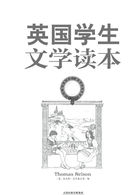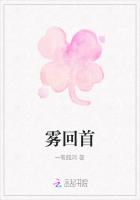DIGGING PEAT IN IRELAND.
Peat is cut in small brick-like squares and dried, before being used as fuel.
The first kind of soil has evidently been made in some way from the rock below, since it gradually shades into this rock. This kind of soil changes with the change of the bed rock. A striking illustration occurs in Kentucky, where the rich and fertile "Blue Grass" region is bounded by the poor and sandy "Barrens." The one is underlaid by limestone and the other by sandstone.
The soil at the surface is usually finer than the soil a foot or so below the surface, and sometimes it has a great deal of decayed vegetable matter mixed with the decomposed rock, and to this its fertility is often largely due. Some soils are made up almost entirely of decayed vegetable matter, peat and muck. The underlying coarser and lighter colored soil, which contains little if any vegetable matter, is usually called the subsoil.
Experiment 47. -Examine under a strong magnifying glass samples of sand, loam, clay, peat and other kinds of soil. Notice the different kinds of particles composing the different soils and the shapes of these particles.
Experiment 48. -Put a handful of ordinary loamy soil into a fruit jar nearly full of water and allow it to stand for a day or two, shaking occasionally. At the end of this time shake very thoroughly and after allowing it to settle for a minute,pour off the muddy water into another jar. Allow thisto stand for about an hour and then pour off the roily water and evaporate it slowly, being careful not to burn the material left. Examine with the eye, by rubbing between the thumb and fingers, and with a magnifying glass, the three substances thusseparated. These three separates will be composed largely of sand, silt and clay.
Fig. 43.
If a compound microscope is available, mix a bit of the silt and of the clay in a drop of water and put these drops on glass slides. Examine the drops under the low power of the microscope. Notice the little black particles of decayed vegetable matter, also the little bunches of particles that may still cling together. Why was it necessary to soak the soil so long? Draw the shapes of a few of the particles. Describe the composition of the soil you have examined.
If we examine most soils with a microscope, we shall find that they are composed, as was seen in Experiment 48, of many different kinds of material. Some of these materials dissolve slowly in water and thus furnish food for plants; others are insoluble.
In different soils the particles vary greatly in size as well as in composition. In gravel the particles are large and in a gram"s weight there would be but few; in sands there are many more, dependent upon the fineness; and in a gram of clay there are several billion particles. Agricultural soils, intermediate between sand and clay, are usually called loams. There are sandy loams and clayey loams, with many intermediate varieties. As the mineral part of the soil is derivedentirely from the rocks, only those minerals which were present in the underlying rock can be present in sedentary soils, whereas in transported soils the underlying rock has had no influence upon the soil.
The minerals composing the soil must furnish certain substances if the soils are to support plants. The substances needed in most abundance are nitrogen, phosphoric acid, potash and lime. Practically all soils except the quartz sands contain more or less of these substances.
The chemical make-up of the soil is, however, only one of the qualities necessary for it to support plant life. It must contain water. Plants require a very great deal of water. Yet few plants absorb the proper amount of water if they are submerged in it, or even if their roots are submerged. They must have the soil only partly saturated with water.
Experiment 49. -Take about a quart of soil from a few inches below the surface of the ground and after sifting out the large chunks, put it in a sheet iron pan and carefully weigh it to the fraction of a centigram. Place the pan containing the soil in a drying oven or ordinary oven, the temperature of which is but little above 100° C. The soil should be spread out as thin as possible. Allow it to remain in the oven for some time, until it is perfectly dry throughout. Weigh again. The loss of weight will be the weight of water contained in the soil. As there was no free water in the soil how was this water held? Dip your hand into water and notice how the water clings to it after it is withdrawn. Examine with the eye and the lens several particles of the original soil as taken from the ground and see if there is a water film on each of these as there was on the wet hand.
Experiment 50. -Take the soil after it was dried and weighed in the previous experiment and heat it throughout to a red heat over a Bunsen burner or in a very hot oven. Weigh again. If there is still a loss of weight this must be due to the burning of the organic matter, rotten twigs, roots, leaves, etc., which was in the soil. Soils differ greatly in the amount of water they contain and in the amount of organic substance present.
We have seen from Experiment 49 how the soil takes up water, and how each little particle has a film of water around it. Little hairs on the plant roots are prepared to take up these little films of water which surround the soil particles. These water films have probably dissolved a minute amount of material from the soil particles, and this material enters into the plant and can be used for food.
Experiment 51. -Fill an 8 oz. bottle with soil taken from a few inches below the surface. Fit the bottle with a two-hole rubber stopper having the long neck of a three or four inch funnelpushed as far as possible through one
hole and a bent delivery tube just passing through the other hole. See that there is no air space between the soil and the stopper. The soil in the bottle should be as hardpacked as it was originally in the ground.
Fig. 44.
If necessary, push a wire down through the neck of the funnel so as to free all hard-packed particles of soil in it.












